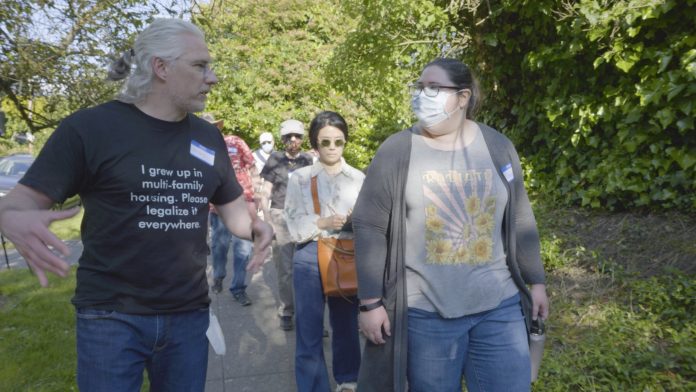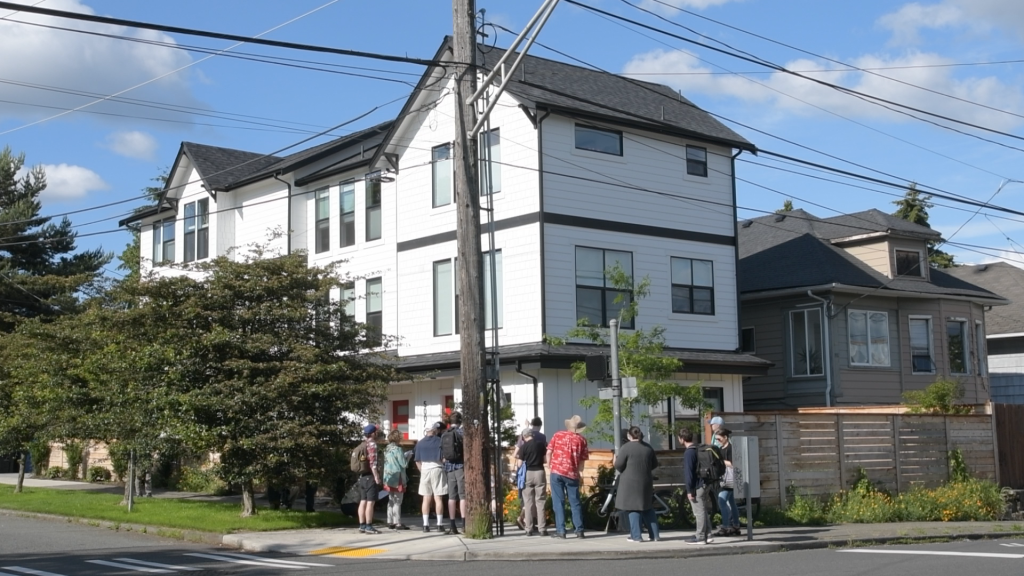
The “Visions of Wallingford” project poses a question: “How does a neighborhood learn?”
It’s one that strikes me as both fascinating and important.
It’s important because in Seattle the city government has traditionally given geographically defined “neighborhoods” pride of place in city planning. The 1990s neighborhood planning process has had a profound effect on Wallingford through the present day. A “comprehensive plan update” aiming to shape Seattle through 2035 has already started.
It’s fascinating because land doesn’t learn, humans do. And where the rubber hits the road, the way the city has primarily focused on engaging with “neighborhoods” for planning purposes has been on “the people who currently reside” in each neighborhood.
This is an opinionated choice. For example, people who work but don’t live in a particular geographic area could be treated with equal emphasis as “resident” neighbors. Or residents of Seattle could be treated as first class stakeholders in both the neighborhood in which they live today, and the one neighborhood they’d most like to live in, if they could, since neighborhood planning might greatly affect their shot at doing so.
This makes the process of learning a fascinating one.
In order to learn, we must “connect the dots” across both codified knowledge and empirical data as well as lived experience. We have to do this mindful of the fact that some people with lived experience relevant to forming a vision for the neighborhood may “no longer” or “not yet” be here.
With all that in mind, I was grateful for a chance to join a wonderful tour of “Wallingford’s diverse housing types” organized by Kelli Refer, one of my Wallingford resident neighbors.
Kelli lives in a “detached accessory dwelling unit” (“DADU”) also commonly referred to as a “backyard cottage.” It’s a form of housing I think is great for a whole list of reasons — more homes on less land are good for affordability and the environment, for example — but that I’d never visited “in the flesh.”
Her family’s story is an object lesson about what’s at stake for both individuals and communities as we envision what type of neighborhood we want to be, for whom.
They were happy renting residents of Wallingford, but faced with the prospect of being unable to afford home ownership contemplated moving away — with “away” meaning to “another more affordable city entirely” such as St. Louis.
One thing they love about Wallingford is that they were able to live car-free (a commendable thing, in my book). Moving “further out” locally to a less walkable, less well-served by transit area locally would not work for them.

Had they moved away, it would have been a silent loss of our ability to learn from a household that is deeply committed to doing a great thing for both the neighborhood and planet: maximize use of walkable shopping and services while eliminating motor vehicle miles traveled.
Fortuitously, they had friends who owned a home here who offered them the chance to build the DADU on their property. It’s a lovely 800 square foot, two story home, sharing the 4,000 square foot lot with the main house. In a win-win, Kelli and her family are responsible by legal agreement for their share of the land, reducing the property tax burden on their friends.
In what struck me as an ideal arrangement for affordability and the environment, the main house also has a basement apartment (technically an “accessory dwelling unit” or “ADU”).
This connected with my lived experience. I grew up in triple deckers, which in addition to being literally “stacked flats,” I’d also call a “stacked win.” For renters like us, they provided homes we could afford. They offered a path to homeownership for people who needed to trade space for rent in order to afford a mortgage (including my maternal grandparents). And while only the size of a largish house, they fostered very walkable neighborhoods and healthy local business districts.
Unfortunately, this also connected some dots between visions of the neighborhood that are in tension.
The 1990s neighborhood plan speaks positively about accessory dwelling units, but insists on “strict enforcement” of “off street parking requirements.” At the time their DADU was built, Kelli and her family were saddled with the cost of a parking pad they didn’t need (and deprived of a little grassy play area for their daughter).
Since then, the rules have been liberalized to remove parking requirements, and to raise the allowable homes per lot from two to three (thereby making the basement apartment legal).
Both of these changes were opposed by the Wallingford Community Council. So too was the change to allow a maximum of 12 rather than eight people to live on one lot — legalization of the pattern of housing three families of three to five people that probably accounted for half the triple deckers on my street growing up, and opening up flexibility for the lot Kelli’s family lives on to do the same.
Prior to this tour, I’d have told you in the abstract that her family’s living arrangements are nothing to fear, and, to the contrary, something to be encouraged. I already believed that lobbying, law, or policy that might stand in the way was misguided.
Afterward, I feel a stronger sense of connection. I remember with crystal clarity growing up in great neighborhoods — but where “no apartment” meant “no home.” Buying a house was not an option for my parents. Her family’s story evoked that emotional memory — including the fact that the type of home I grew up in was sometimes vilified and banned.
And it invigorated a sense of urgency: it took decades between the 1990s plan and accessory dwelling unit liberalization, and it may still take years to codify further steps to enable people who want to stay but are being priced out to stay here. How many individuals and families with what I’d say are values that are great for the neighborhood and the planet have we lost from our neighborhood learning community? I fear it’s more than I would have thought.
I hope we’ll be so bold as to envision changes that might not only enable more people to stay, but also enable some who’ve left to come back — and sooner rather than later.

Bryan Kirschner
Bryan Kirschner works in technology and lives in Wallingford.
